Living in beautiful Melbourne, Florida, offers a fantastic lifestyle, from breezy beaches to vibrant communities. However, even paradise isn’t immune to potential home disasters. While major hurricanes and tropical storms are well-known threats, many common disasters actually originate inside your home. As we look towards 2025, being prepared for these internal culprits is more crucial than ever for protecting your property, your peace of mind, and your loved ones.
Disasters can strike a home in many ways. While we often think of external catastrophic natural events, sources within the home can be just as devastating. The most common internal threats include pipe bursts leading to water damage, sewage backflows creating hazardous conditions, washing machine overflows causing significant water issues, kitchen fires escalating quickly, and the silent danger of carbon monoxide poisoning.
Read also: Restoration Response in Melbourne, Florida: Fire vs. Water
At PuroClean of Melbourne, we’ve seen firsthand the damage these events can cause. Our goal is to not only help you recover but also to empower you with the knowledge to prevent them. Here’s crucial information on how to deal with and prevent the disasters lurking from inside your Melbourne home.
1. The Deluge from Within: Pipe Bursts and Water Damage in Melbourne
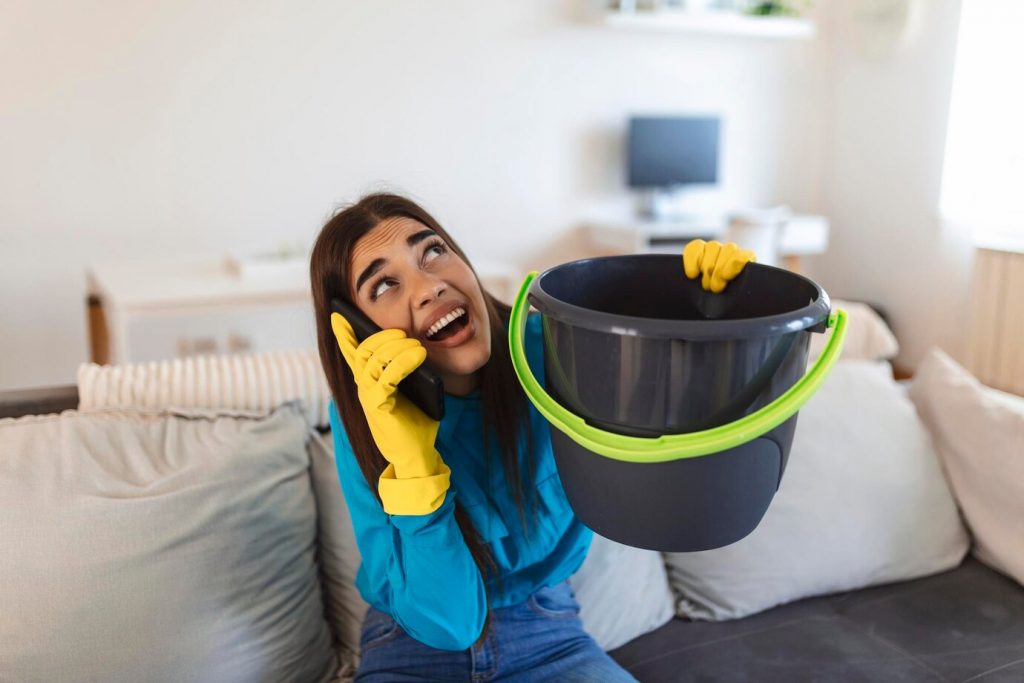
Pipe bursts are a leading cause of water damage in Melbourne homes. A single burst pipe can release several gallons of water per minute, rapidly flooding rooms, damaging flooring, drywall, furniture, and creating a perfect environment for mold growth if not addressed immediately.
Common Causes of Pipe Bursts in Melbourne for 2025:
- Aging Infrastructure: Many Melbourne homes have plumbing systems that are several decades old. Over time, pipes (especially galvanized steel or older copper) can corrode, weaken, and become prone to leaks or sudden bursts.
- High Water Pressure: While good water pressure is desirable, excessively high pressure puts constant stress on pipes, fittings, and appliance connections, leading to failures.
- Accidental Damage: DIY home improvement projects or even something as simple as hammering a nail in the wrong spot can puncture a water pipe.
- Shifting Foundations: Florida’s sandy soil can sometimes lead to subtle foundation shifts, which can strain and eventually break pipes.
- Sudden Temperature Changes (Less Common but Possible): While Melbourne rarely sees freezing temperatures, unseasonably cold snaps, especially for exposed or poorly insulated pipes (e.g., in a crawl space or attic), could theoretically lead to freezing and bursting, though corrosion and age are far more common culprits here.
Immediate Actions if a Pipe Bursts:
- Shut Off the Main Water Valve: This is the most critical first step. Every homeowner should know where their main water shut-off valve is located and how to operate it. It’s often found where the water pipe enters your home, in a utility closet, basement, crawlspace, or outside near the meter.
- Turn On Cold Faucets: After shutting off the main valve, open the lowest faucets in the house (like a basement sink or outdoor spigot) and a few others to help drain the remaining water from the system, directing it out of the faucets instead of the burst.
- Safely Address Electrical Hazards: If water is near electrical appliances or outlets, turn off the electricity to the affected area at the breaker panel, but only if you can do so safely without standing in water.
- Call Your Plumber: A qualified plumber is needed to repair the burst pipe.
- Contact Your Insurance Agent: Notify them of the incident to understand your coverage and begin the claims process.
- Call PuroClean of Melbourne Immediately: Time is of the essence. The longer water sits, the more extensive the damage becomes, including structural issues and mold growth. We specialize in water damage restoration Melbourne, offering 24/7 emergency services. Our team will extract standing water, dry and dehumidify the affected areas, sanitize, and restore your home.
Prevention Strategies for Melbourne Homes in 2025:
- Regular Plumbing Inspections: Have a licensed plumber inspect your plumbing system annually, especially if your home is older than 20 years. They can identify corrosion, pinhole leaks, or stressed fittings.
- Know Your Water Pressure: Consider having a pressure gauge installed or ask your plumber to check the pressure. If it’s too high (typically above 75-80 psi), a pressure-reducing valve can be installed.
- Insulate Exposed Pipes: While freezing is rare, insulating pipes in unconditioned spaces like attics or crawl spaces can also offer some protection against general wear and tear.
- Be Cautious During Renovations: Always know what’s behind walls before drilling or hammering.
- Address Small Leaks Promptly: Don’t ignore minor drips. They can be indicators of bigger problems and can contribute to localized water damage and mold.
2. The Unwanted Return: Sewage Backflows in Melbourne
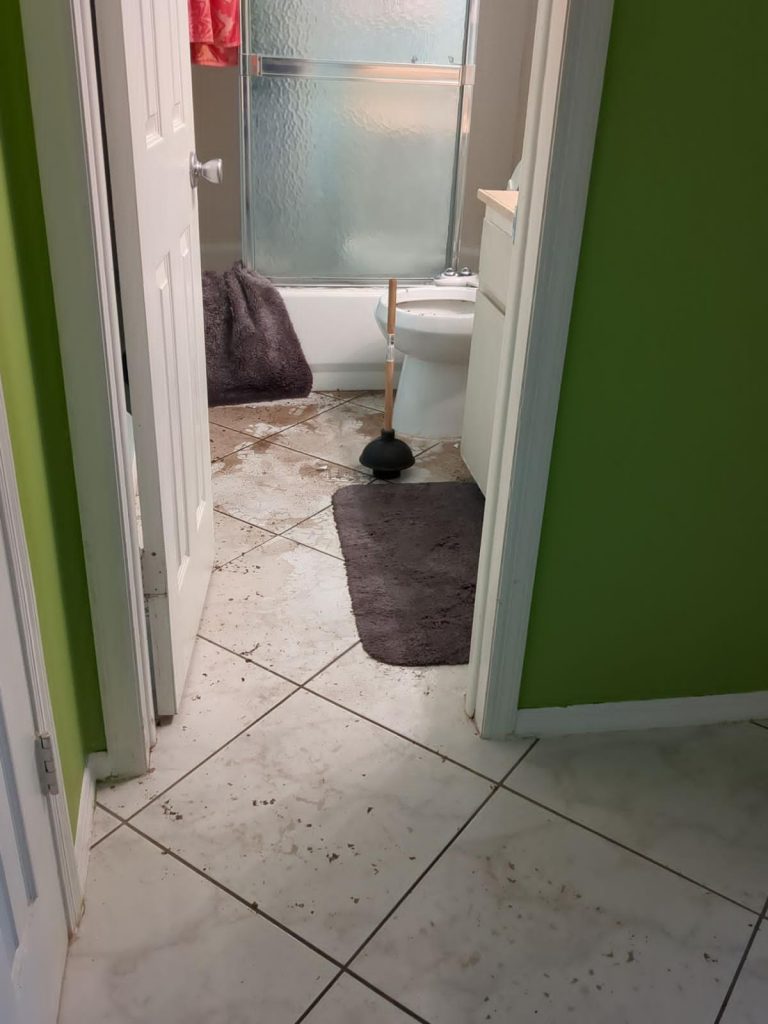
Sewage backflows are one of the most unpleasant and dangerous disasters a homeowner can face. This isn’t just water; it’s “black water,” highly contaminated with bacteria, viruses, parasites, and other pathogens. Exposure can lead to serious health risks.
Common Causes of Sewage Backflows in Melbourne:
- Heavy Rainfall and Storms: Melbourne’s proximity to the coast and susceptibility to tropical storms and hurricanes mean that municipal sewer systems can become overwhelmed during heavy rain events, causing sewage to back up into homes through floor drains, toilets, and showers.
- City Sewer Main Blockages: Blockages in the main city sewer line can force wastewater back up connecting residential lines.
- Tree Root Intrusion: Tree roots are naturally drawn to the moisture and nutrients in sewer lines. They can infiltrate pipes, causing blockages and damage. This is a particular concern in established Melbourne neighborhoods with mature trees.
- Structural Defects: Cracks or collapses in older sewer lines (both private laterals and city mains) can lead to backflows.
- Improper Waste Disposal: Flushing items like paper towels, feminine hygiene products, “flushable” wipes (which often aren’t truly flushable), or pouring grease down drains can create blockages in your home’s plumbing or contribute to larger municipal blockages.
Immediate Actions During a Sewage Backflow:
- Avoid All Contact: Do not enter the affected area if possible. If you must, wear protective gear: waterproof boots, gloves, eye protection, and a respirator or N95 mask.
- Turn Off Electricity (If Safe): If the backflow is near electrical systems, shut off power to avoid electrocution risks, but only if you can do so without direct contact with the contaminated water.
- Do Not Use Plumbing Fixtures: Avoid flushing toilets or running water in sinks, as this can worsen the backflow.
- Ventilate (If Possible, Safely): If it’s safe and doesn’t draw more contaminants in, open windows to help reduce airborne concentrations of contaminants, but prioritize your safety.
- Call PuroClean of Melbourne Immediately: Sewage cleanup is NOT a DIY job. It requires specialized training, equipment, and disinfectants to ensure the area is thoroughly cleaned, sanitized, and safe. We are experts in sewage cleanup and disinfection and mold remediation Melbourne, which often follows such incidents.
- Notify Your Utility Company or Municipality: If you suspect the blockage is in the city main.
Prevention Strategies for Melbourne Homes in 2025:
- Install a Backwater Prevention Valve: These valves are installed on your main sewer line and are designed to close automatically if sewage begins to back up from the municipal line, preventing it from entering your home. This is a highly recommended upgrade, especially in flood-prone areas of Melbourne.
- Proper Waste Disposal: Only flush human waste and toilet paper. Dispose of grease, fats, and oils in the trash, not down the drain. Avoid flushing wipes, diapers, or other non-degradable items.
- Maintain Your Sewer Lateral: Have your private sewer line inspected periodically, especially if you have mature trees or an older home. Hydro-jetting can clear out roots and debris.
- Grade Your Yard Properly: Ensure your landscaping slopes away from your foundation to prevent surface water from overwhelming your drainage or seeping into sewer lines.
3. The Laundry Room Nightmare: Washing Machine & Appliance Overflows

Washing machines are workhorses in most Melbourne households, but they are also a surprisingly common source of water damage, accounting for a significant percentage of water-related insurance claims. Dishwashers, refrigerators with ice makers, and water heaters can also be culprits.
Common Causes of Appliance Overflows/Leaks:
- Washing Machine Hose Failure: This is the most frequent cause. Rubber supply hoses can become brittle, crack, blister, or burst, especially under constant pressure.
- Drain Clogs: Lint, detergent residue, and foreign objects can clog washing machine drain lines, causing water to back up and overflow.
- Internal Component Malfunction: Faulty water level sensors, inlet valves, or pump failures in washing machines or dishwashers can lead to overfilling or leaks.
- Water Heater Leaks: Older water heaters can corrode and develop leaks, sometimes catastrophically. The average lifespan is 8-12 years.
- Refrigerator Ice Maker Line Leaks: Small plastic or copper lines supplying water to ice makers can crack, loosen, or develop pinhole leaks.
Immediate Actions for Appliance Overflows/Leaks:
- Shut Off Power and Water: For washing machines, unplug the unit or turn off its breaker. Then, turn off the hot and cold water supply valves, typically located behind the machine. For other appliances, locate their individual shut-off valves or shut off the main water supply if necessary.
- Contain and Remove Water Quickly: Use towels, mops, or a wet/dry vacuum to remove as much water as possible, as quickly as possible. The faster you act, the less damage will occur.
- Move Affected Items: Relocate furniture, rugs, and other items from the wet area to prevent further damage.
- Promote Drying: Open windows (if humidity outside isn’t too high) and use fans to circulate air and aid drying.
- Call PuroClean of Melbourne: If the overflow is substantial, has seeped under flooring, into walls, or affected multiple rooms, professional help is essential for complete drying and to prevent mold growth. We have specialized equipment like industrial air movers and dehumidifiers for thorough water damage restoration Melbourne.
Prevention Strategies for Melbourne Homes in 2025:
- Inspect Hoses Regularly: Check washing machine supply hoses monthly for bulges, cracks, kinks, or signs of wear.
- Replace Rubber Hoses: Proactively replace standard rubber washing machine hoses with high-quality, steel-braided hoses. These are far more resistant to bursting. Consider replacing them every 3-5 years regardless of appearance.
- Use a Drip Pan: Place a drip pan under your washing machine. Some pans can even be connected to a drain.
- Don’t Overload Your Washing Machine: This can strain the machine and contribute to clogs.
- Clean Lint Filters Regularly: Both in your washing machine (if accessible) and your dryer.
- Maintain Your Water Heater: Inspect it regularly for signs of rust or leaks. Consider replacing it if it’s approaching the end of its typical lifespan (around 10-12 years in Florida due to water quality). Flush it annually to remove sediment.
- Check Refrigerator and Dishwasher Connections: Periodically inspect water lines and connections for these appliances.
- Consider Leak Detection Devices: Smart home technology in 2025 offers affordable water leak sensors that can send alerts to your phone or even automatically shut off water if a leak is detected.
4. The Heart of the Home’s Hazard: Kitchen Fires

The kitchen is often called the heart of the home, but it’s also where the majority of household fires start. Fire damage in Melbourne homes often originates from unattended cooking or appliance malfunctions.
Common Causes of Kitchen Fires:
- Unattended Cooking: This is the leading cause. Leaving pots and pans unwatched on the stovetop, especially when frying, can quickly lead to a fire.
- Grease Fires: Overheated oil or grease can ignite.
- Flammable Items Near Heat Sources: Leaving dish towels, oven mitts, paper products, or curtains too close to burners or hot appliances.
- Appliance Malfunctions: Toasters, toaster ovens, microwaves, and even coffee makers can malfunction and catch fire, especially if they are old or have damaged cords.
- Electrical Issues: Faulty wiring or overloaded circuits in the kitchen can also spark fires.
Immediate Actions During a Kitchen Fire:
- For a Grease Fire (Pan on Stovetop):
- Turn Off the Heat: Immediately turn off the burner.
- Cover the Flames: If it’s small and you can do so safely, slide a lid or a baking sheet over the pan to smother the flames. Leave it covered until it’s completely cool.
- Use Baking Soda: For very small grease fires, douse the flames with generous amounts of baking soda.
- NEVER Use Water: Water will splatter the burning grease and spread the fire, potentially causing severe burns.
- NEVER Move a Burning Pan: You could spill burning grease and spread the fire or burn yourself.
- For an Oven Fire:
- Turn Off the Heat: Turn off the oven and keep the door closed. The lack of oxygen will often extinguish the fire.
- For a Toaster or Microwave Fire:
- Unplug the Appliance: If safe to do so, unplug it immediately.
- Use a Fire Extinguisher: If the fire persists after unplugging, use a Class ABC fire extinguisher.
- If the Fire Spreads or You’re Unsure:
- Evacuate Everyone Immediately: Get yourself and all family members out of the house.
- Call 911: Report the fire from outside your home.
- Call PuroClean of Melbourne: Once the fire department has deemed the property safe to re-enter, contact us for fire damage restoration Melbourne. We handle smoke and soot removal, odor elimination, cleaning of salvageable items, and structural repairs.
Prevention Strategies for Melbourne Homes in 2025:
- Stay in the Kitchen: Never leave cooking unattended, especially when frying, grilling, or broiling. If you must leave the kitchen, even for a moment, turn off the stove.
- Keep Flammables Away: Maintain a “kid-free” and “clutter-free” zone of at least 3 feet around your stove and other heat-generating appliances.
- Watch Your Sleeves: Avoid wearing loose-fitting clothing that could catch fire.
- Clean Grease Buildup: Regularly clean stovetops, ovens, and exhaust fan filters to prevent grease accumulation.
- Inspect Appliances and Cords: Check cords for fraying or damage. Replace or repair malfunctioning appliances.
- Have Working Smoke Alarms: Install smoke alarms on every level of your home, inside bedrooms, and outside sleeping areas. Test them monthly and replace batteries at least annually (or opt for 10-year sealed battery units).
- Keep a Fire Extinguisher Handy: Have at least one Class ABC (multipurpose) fire extinguisher in an easily accessible location in or near the kitchen. Know how to use it (PASS: Pull, Aim, Squeeze, Sweep).
- Be Careful with Microwaves: Don’t use metal or non-microwave-safe containers.
5. The Invisible Threat: Carbon Monoxide (CO) Poisoning
Carbon Monoxide (CO) is an odorless, colorless, and tasteless gas produced by the incomplete burning of fuels like natural gas, propane, oil, wood, or charcoal. It’s often called the “silent killer” because it can incapacitate and kill before anyone realizes it’s present. This is a particularly relevant concern in Melbourne during hurricane season if generators are used improperly.
Common Sources of CO in Melbourne Homes:
- Fuel-Burning Appliances: Malfunctioning or improperly vented gas stoves, ovens, water heaters, furnaces, clothes dryers, and fireplaces.
- Generators: Using portable generators indoors, in garages, basements, crawlspaces, or too close to windows, doors, or vents during power outages (a significant risk post-hurricanes in Melbourne).
- Attached Garages: Running a car, lawnmower, or snowblower in an attached garage can allow CO to seep into the home.
- Blocked Chimneys or Flues: Debris or nests can block ventilation, causing CO to build up.
- Charcoal Grills: Using charcoal grills indoors or in enclosed spaces.
Symptoms of CO Poisoning:
CO poisoning symptoms are often flu-like, which can make them easy to dismiss:
- Headache
- Dizziness
- Nausea or vomiting
- Weakness
- Shortness of breath
- Confusion
- Blurred vision
- Loss of consciousness
Immediate Actions if CO Poisoning is Suspected or Alarms Sound:
- Evacuate Immediately: Get everyone, including pets, out of the house into fresh air.
- Call 911 or Emergency Services: Report the suspected CO poisoning from outside your home.
- Seek Medical Attention: Even if symptoms seem mild, get everyone medically evaluated. CO poisoning can have delayed effects.
- Do Not Re-enter: Wait for emergency responders to declare the home safe.
- Identify and Repair the Source: Once cleared, have qualified technicians inspect and repair any potential CO sources before using them again. PuroClean of Melbourne can assist with the aftermath, but identifying the source often requires HVAC or appliance specialists.
Prevention Strategies for Melbourne Homes in 2025:
- Install CO Detectors: This is the most critical preventive measure. Install CO detectors on every level of your home, outside sleeping areas, and according to manufacturer’s instructions. For optimal protection, consider detectors near attached garages and major gas appliances.
- Test CO Detectors Regularly: Test them monthly and replace batteries as needed (or opt for 10-year sealed units). Replace detectors according to the manufacturer’s recommendations (usually every 5-10 years).
- Proper Generator Use: NEVER use a portable generator inside your home, garage, shed, or any partially enclosed area. Operate them at least 20 feet away from doors, windows, and vents. Ensure the exhaust is directed away from the home.
- Annual Appliance Maintenance: Have your fuel-burning appliances (furnace, water heater, oven, dryer) inspected annually by a qualified technician. Ensure they are properly vented.
- Chimney and Flue Maintenance: Have your chimney and flue cleaned and inspected regularly.
- Never Use Ovens or Stovetops to Heat Your Home: This is dangerous and can produce CO.
- Be Aware During and After Storms: Power outages increase reliance on alternative fuel sources. Re-emphasize CO safety before, during, and after any hurricane or major storm affecting Melbourne.
Protecting Your Melbourne Home in 2025 and Beyond
These five common sources of disaster can cause significant disruption, emotional distress, and financial burden. However, by understanding the risks specific to your Melbourne home and taking proactive preventative measures, you can significantly reduce the likelihood of these events occurring.
Read Also: Is Hiring a Restoration Company in Melbourne, Florida Necessary?
General Preparedness Tips for Melbourne Homeowners:
- Home Maintenance Checklist: Develop a regular home maintenance schedule that includes checking plumbing, appliances, electrical systems, and safety devices.
- Emergency Kit: Maintain a well-stocked emergency preparedness kit, especially crucial for Melbourne’s hurricane season.
- Insurance Review: Annually review your homeowner’s insurance policy to ensure you have adequate coverage for various types of damage, including water damage (especially flood insurance if you’re in a flood zone), fire, and other perils.
- Know Your Shut-Offs: Ensure all adult family members know the location of the main water shut-off, main electrical breaker, and gas shut-off (if applicable) and how to operate them.
When Disaster Strikes, PuroClean of Melbourne is Here to Help
Despite the best prevention efforts, disasters can still happen. When they do, know that you’re not alone. PuroClean of Melbourne is your trusted local partner for professional restoration services. We are available 24 hours a day, 7 days a week, because emergencies don’t wait for business hours.
Our certified technicians are experts in:
- Water Damage Restoration Melbourne: From pipe bursts to appliance overflows and storm flooding.
- Fire Damage Restoration Melbourne: Including smoke and soot removal, and odor control.
- Mold Remediation Melbourne: Safely removing mold and preventing its return.
- Sewage Cleanup and Biohazard Removal: Handling hazardous situations with the utmost care and professionalism.
- Storm Damage Cleanup: Assisting with recovery after Melbourne’s notorious weather events.
We understand the stress and trauma that comes with a home disaster. Our commitment is to respond quickly, restore your property efficiently and compassionately, and help you get your life back to normal.
Don’t wait for a disaster to find out who to call. Save our number and remember that PuroClean of Melbourne is “The Paramedics of Property Damage®.”
Contact PuroClean of Melbourne today for any emergency restoration needs or for more information on disaster preparedness for your home in 2025!
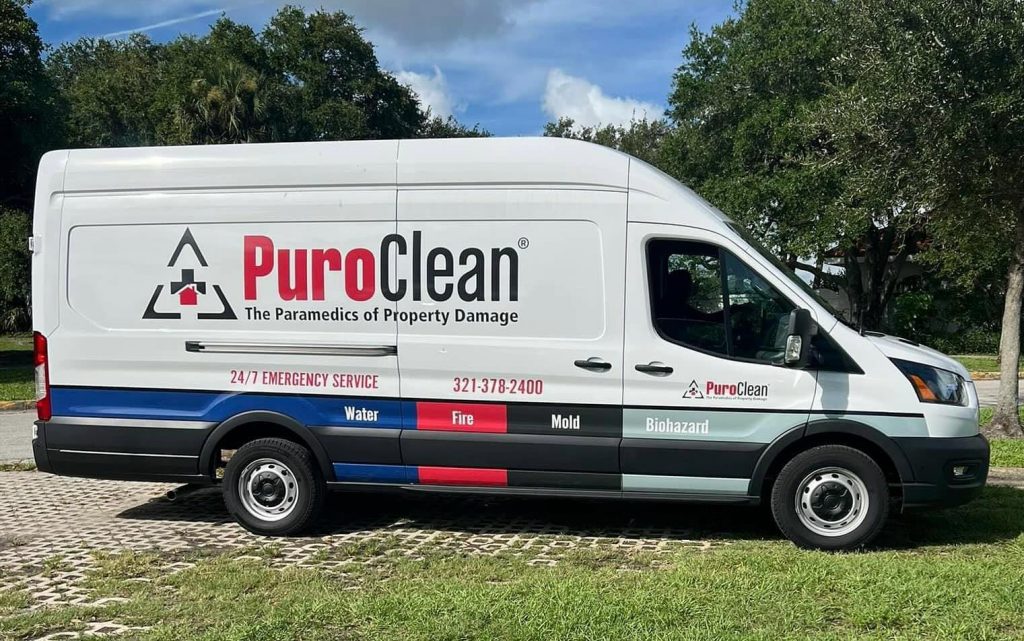
📌 Fire, water, and mold remediation company offering services such as cleaning, carpet restoration, and drying.
🚩 Coastal Technology Center
📍 739 North Dr, Melbourne, FL 32934
🕓 Open 24 hours
📞 (321) 378-2400
🌐 https://www.puroclean.com/melbourne-fl-puroclean-melbourne
📩 [email protected]
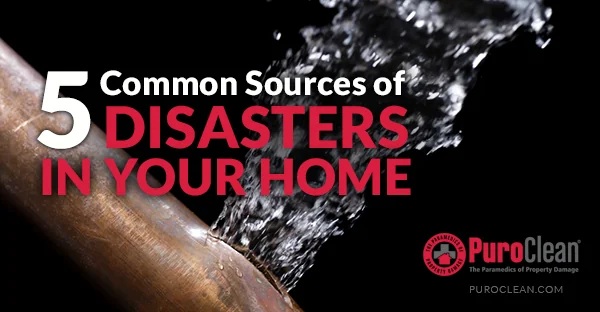
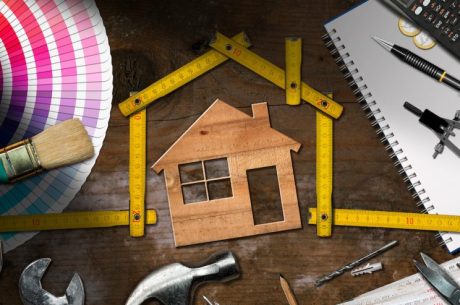
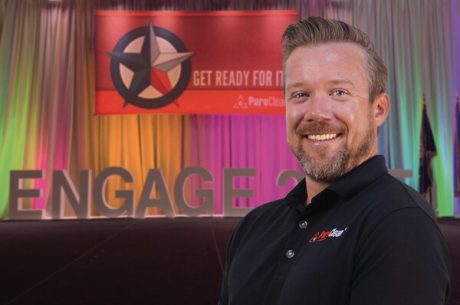

 PuroClean of Melbourne
PuroClean of Melbourne